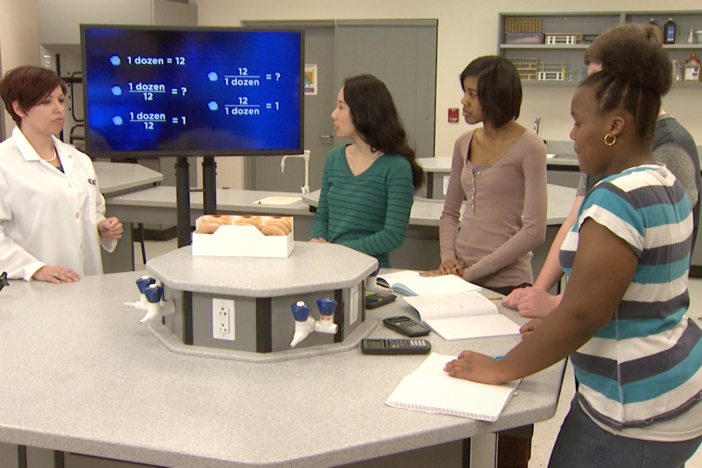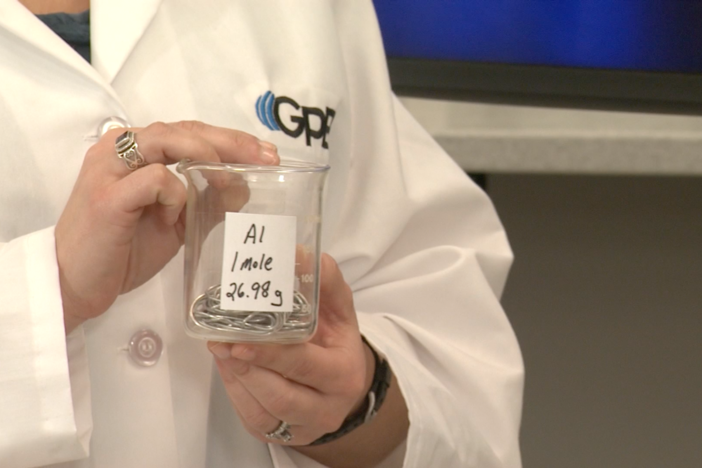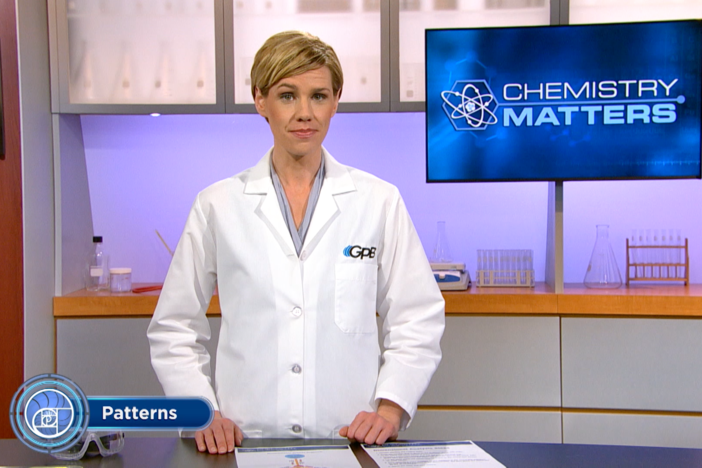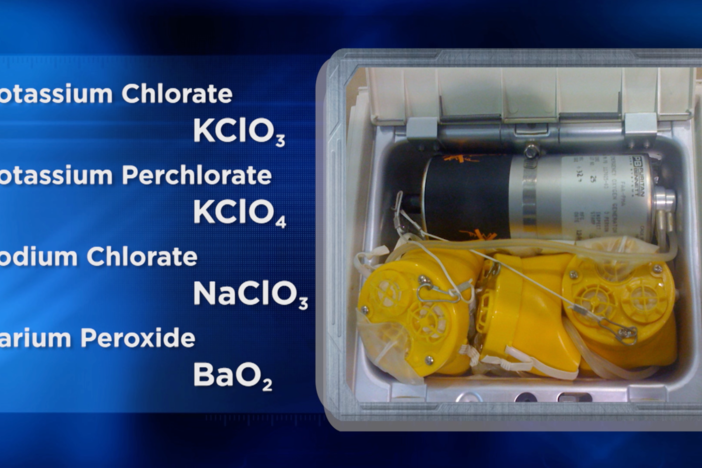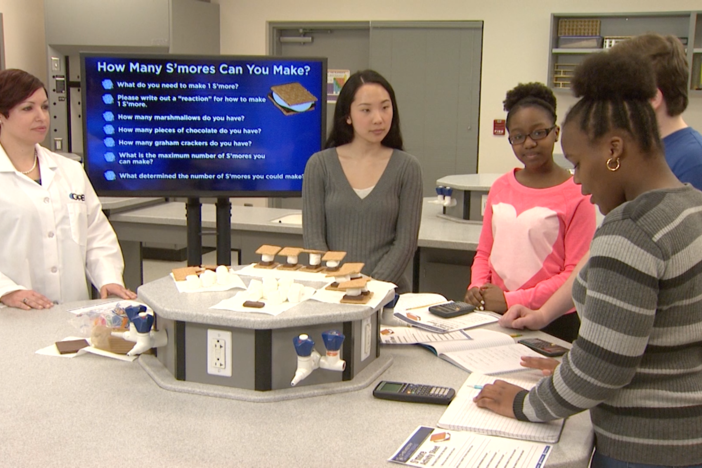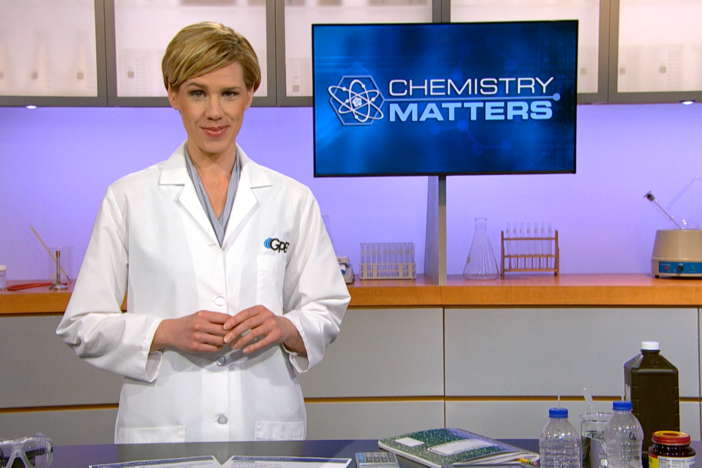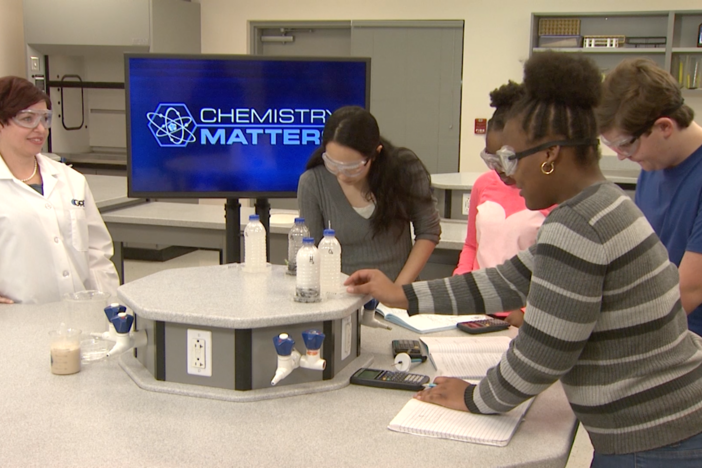Segment A: Dimensional Analysis
Stoichiometry is introduced in this segment, and the students discuss the basics of dimensional analysis.
Segment A: Dimensional Analysis
Stoichiometry is introduced in this segment, and the students discuss the basics of dimensional analysis.
Science
Obtain, evaluate, and communicate information about how the Law of Conservation of Matter is used to determine chemical composition in compounds and chemical reactions.
Use mathematics and computational thinking to apply concepts of the mole and Avogadro's number to conceptualize and calculate
- percent composition
- empirical/molecular formulas
- mass, moles, and molecules relationships
- molar volumes of gases
atomic mass unit - equals 1/12 the mass of a carbon atom.
Avagadro's number - the number of atoms in a mole, equal to 6.02x10^23 atoms.
conversion factor - a ratio expressed as a fraction that equals one.
dimensional analysis - the sequential application of conversion factors expressed as fractions and arranged so that any dimensional unit can be cancelled out until the desired set of dimensional units is obtained.
empirical formula - the simplest formula of a compound expressed as the smallest possible ratio of the elements.
equivalence statement - a statement that shows the quantities and units that are equal to each other.
excess reactant - the reactant in a chemical reaction that remains when a reaction stops once the limiting reactant is completely consumed.
limiting reactant - the reactant in a chemical reaction that limits the amount of product formed.
molar mass - the mass, in grams, of a mole of a substance.
molar volume - the volume of one mole of any gas at standard temperature and pressure.
mole - The SI unit that measures the amount of matter a substance has; one mole is equal to 6.022x10^23 representative particles, also known as Avagadro's number.
mole ratio - the ratio of moles of one substance to the moles of another substance in a balanced equation.
molecular formula - a formula which states the exact number and type of each atom present in a molecule of a substance.
percent composition - the percentage by mass of each element in a compound.
percent yield - the ratio of the actual yield to the theoretical yield of a material.
stoichiometry - the calculation of the quantities of reactants and products involved in a chemical reaction.
theoretical yield - the amount of product formed from the complete conversion of a limiting reactant in a chemical reaction.
The Chemistry Matters teacher toolkit provides instructions and answer keys for labs, experiments, and assignments for all 12 units of study. GPB offers the teacher toolkit at no cost to Georgia educators. Complete and submit this form to request the teacher toolkit. You only need to submit this form one time to get materials for all 12 units of study.
